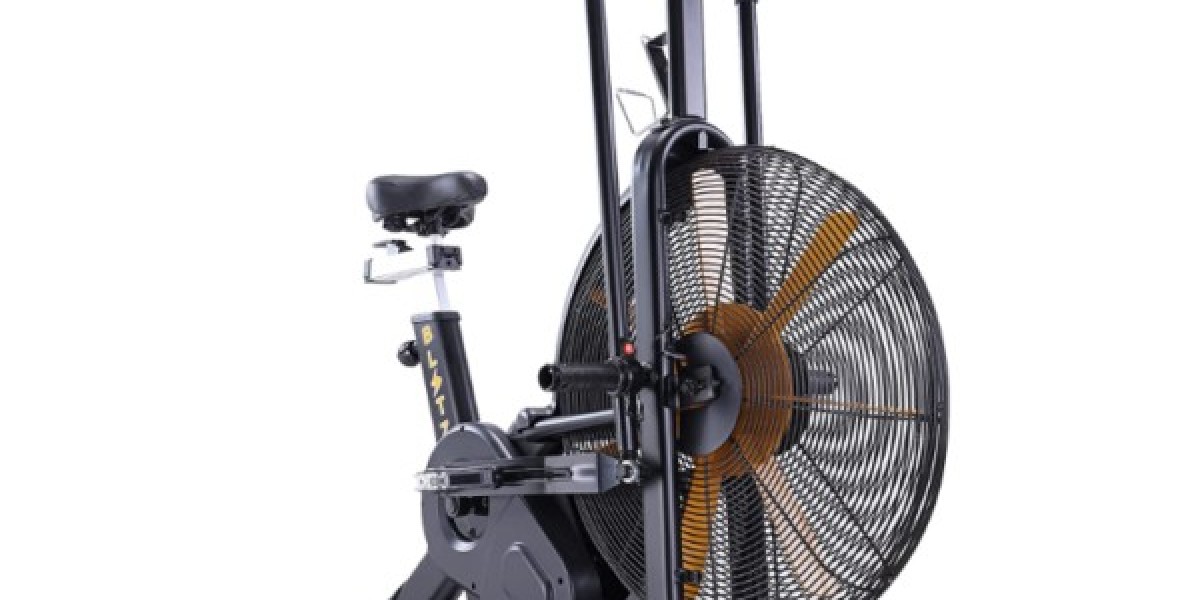Spin bikes, also known as indoor cycling bikes, have revolutionized the way people approach cardio workouts. These powerful machines are designed to mimic the experience of outdoor cycling, offering an intense, full-body workout that can be tailored to all fitness levels. Whether you're new to indoor cycling or a seasoned pro, a spin bike can be a valuable addition to your home gym or fitness routine. In this comprehensive guide, we'll explore the benefits of spin bikes, how they differ from other exercise bikes, tips for choosing the right one, and how to maximize your workouts.
Why Choose a Spin Bike?
Spin bikes offer a unique set of advantages that make them an excellent choice for those seeking a challenging and effective cardio workout. Here’s why you might consider incorporating a spin bike into your fitness routine:
Intense Cardio Workout: Spin bikes are known for their ability to provide a high-intensity cardiovascular workout. The design of a spin bike allows you to increase resistance and pedal speed, pushing your heart rate to levels that improve cardiovascular health, burn fat, and build endurance. Spin bikes are ideal for those who want to get their heart pumping and maximize calorie burn in a relatively short period.
Full-Body Engagement: Unlike some other exercise bikes that primarily target the lower body, spin bikes engage multiple muscle groups, including the core, upper body, and lower body. The ability to stand while pedaling, known as "out of the saddle" riding, activates your core and upper body muscles, providing a comprehensive workout. This makes spin bikes an excellent option for those looking to tone and strengthen their entire body.
High-Calorie Burn: If weight loss or fat burning is your goal, spin bikes are one of the most effective tools available. The combination of high-intensity intervals, varying resistance levels, and the ability to stand and pedal all contribute to a significant calorie burn. Depending on the intensity of your workout, you can burn anywhere from 400 to 600 calories in just a 45-minute session.
Customizable Workouts: One of the major advantages of spin bikes is their versatility. You can easily adjust the resistance to simulate different terrains, such as flat roads, hills, and sprints. This allows you to customize your workouts to match your fitness level and goals. Whether you're doing steady-state cardio, interval training, or a combination of both, a spin bike can adapt to your needs.
Low-Impact Exercise: Despite their intensity, spin bikes provide a low-impact workout that is gentle on the joints. This makes them an excellent option for individuals with joint pain, arthritis, or those recovering from injuries who still want to engage in vigorous exercise. The smooth, controlled pedaling motion reduces the risk of injury while still delivering a challenging workout.
Convenience and Accessibility: Spin bikes are easy to use and don’t require any special skills or training. They are compact and can fit into smaller spaces, making them ideal for home gyms. With a spin bike at home, you can conveniently squeeze in a workout at any time of day, regardless of the weather outside. Many models also come with built-in workout programs or compatibility with fitness apps, making it easy to follow along with guided sessions.
Spin Bikes vs. Other Exercise Bikes
When choosing an exercise bike, it’s important to understand how spin bikes compare to other types of bikes, such as upright and recumbent bikes. Here’s a look at the key differences:
Spin Bikes vs. Upright Bikes: Upright bikes are designed to resemble traditional outdoor bicycles, with a smaller seat and a more upright riding position. While upright bikes provide a good cardiovascular workout, they don’t offer the same level of intensity as spin bikes. Spin bikes are specifically designed for high-intensity workouts, with features like adjustable resistance, a heavier flywheel, and the ability to stand while pedaling. Spin bikes are better suited for those seeking a more challenging workout that engages the entire body.
Spin Bikes vs. Recumbent Bikes: Recumbent bikes feature a reclined seat with a backrest, providing more support for the lower back and reducing strain on the joints. They are ideal for those looking for a comfortable, low-impact workout that focuses primarily on the lower body. Spin bikes, on the other hand, offer a more dynamic and demanding workout that engages multiple muscle groups. While recumbent bikes are great for steady-state cardio and rehabilitation, spin bikes are better suited for high-intensity interval training (HIIT) and full-body workouts.
Spin Bikes vs. Air Bikes: Air bikes, or fan bikes, use a fan mechanism to generate resistance, which increases with the intensity of your pedaling. They also include moving handlebars that engage the upper body, providing a full-body workout. Air bikes are known for their ability to deliver a high-intensity workout that challenges both the upper and lower body. Spin bikes, in contrast, focus more on the lower body with a fixed handlebar position. Spin bikes are ideal for those who prefer a more traditional cycling experience, while air bikes are great for those looking for a more varied and full-body workout.
How to Choose the Right Spin Bike
Selecting the right spin bike involves considering various factors, including your fitness goals, budget, and available space. Here are some key points to consider when choosing a spin bike:
Flywheel Weight: The flywheel is a critical component of a spin bike, as it determines the smoothness and resistance of your ride. Spin bikes typically have heavier flywheels, ranging from 30 to 50 pounds, which provide a smoother and more stable ride. A heavier flywheel also allows for greater resistance, making your workouts more challenging. If you’re new to spin bikes, a flywheel weight of around 30 to 40 pounds is ideal. More experienced riders may prefer a heavier flywheel for increased intensity.
Adjustability: To ensure a comfortable and effective workout, it’s important to choose a spin bike with adjustable features. Look for a bike with adjustable seat height, handlebar height, and horizontal adjustments for both the seat and handlebars. This will allow you to find the perfect riding position that suits your body type and riding style. Proper adjustability is crucial for preventing discomfort and injuries during your workouts.
Resistance System: Spin bikes come with different types of resistance systems, including friction and magnetic resistance. Friction resistance uses brake pads to create resistance, while magnetic resistance uses magnets to adjust resistance levels without physical contact. Magnetic resistance is generally preferred for its smooth, quiet operation and minimal maintenance. If you prefer a more traditional feel with higher resistance at maximum settings, friction resistance may be a good choice.
Durability and Build Quality: A sturdy, well-built spin bike should feel stable and durable during use. Look for a bike with a solid frame, high weight capacity, and good user reviews. Spin bikes are designed for intense workouts, so it’s essential to choose one that can withstand regular use. Higher-end models typically offer better build quality and longevity, making them a worthwhile investment for serious cyclists.
Display and Tracking Features: While not all spin bikes come with a display, many models offer tracking features that allow you to monitor your workout metrics, such as time, distance, speed, calories burned, and heart rate. Some spin bikes are also compatible with fitness apps, allowing you to track your progress and follow along with virtual classes. If tracking your workouts is important to you, look for a bike with a clear, easy-to-read display and the ability to sync with fitness apps.
Space and Portability: Spin bikes are generally more compact than other cardio machines, but it’s still important to consider the space you have available. Measure the area where you plan to place the bike and compare it to the bike’s dimensions. Some spin bikes also come with transport wheels, making them easy to move and store when not in use.
Budget: Spin bikes come in a wide range of prices, from budget-friendly models to high-end machines with advanced features. Determine your budget before shopping and look for a bike that offers the best value for your money. While it’s tempting to go for the cheapest option, investing in a higher-quality bike can provide better performance and durability over time.
Maximizing Your Spin Bike Workouts
To get the most out of your spin bike workouts, it’s important to use the machine effectively and incorporate variety into your routine. Here are some tips to help you maximize your workouts:
Warm-Up and Cool-Down: Start each workout with a 5-10 minute warm-up at a low resistance level to get your muscles and joints ready for exercise. Similarly, end your session with a cool-down period to gradually lower your heart rate and prevent muscle stiffness.
Interval Training: Interval training involves alternating between periods of high-intensity exercise and lower-intensity recovery. On a spin bike, you can do this by increasing the resistance or speed for a set period, followed by a recovery period at a lower intensity. Interval training is highly effective for burning calories, improving cardiovascular fitness, and building endurance.
Standing vs. Seated Riding: One of the unique features of spin bikes is the ability to stand while pedaling, known as "out of the saddle" riding. Incorporating both seated and standing intervals into your workout can help engage different muscle groups and add variety to your routine. Standing intervals are great for building strength and endurance, while seated intervals focus more on cardio and lower body strength.
Adjust the Resistance: To challenge yourself and continue making progress, vary the resistance levels during your workouts. Higher resistance levels will require more effort from your legs, helping to build strength and endurance over time.








